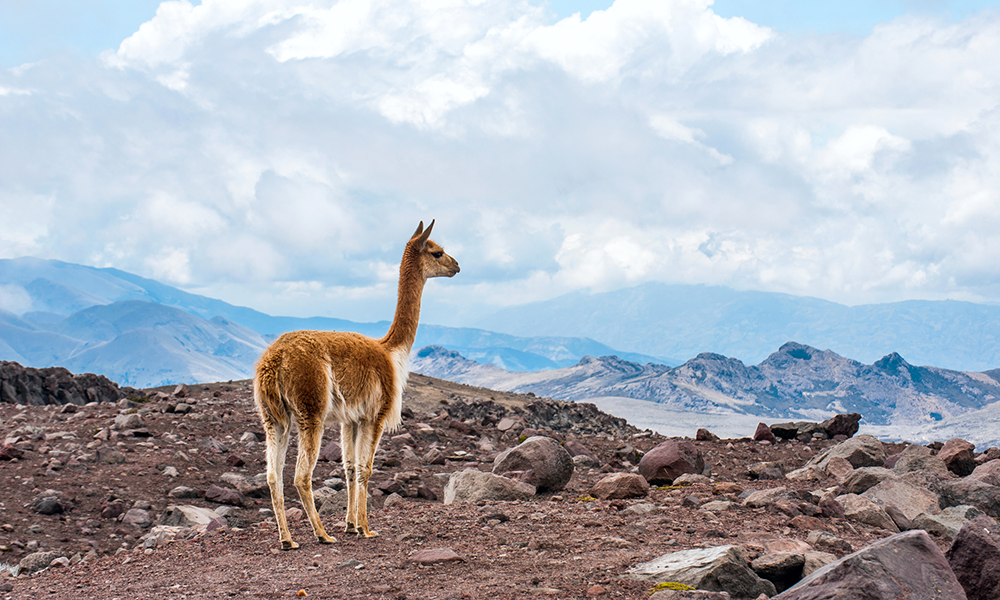JMU researcher: Animals speeding up climate change dynamics
JMU Headlines
Harrisonburg, Virginia — With glaciers melting away faster every year in the Peruvian Andes, the result of warming temperatures, family groups of llama-like vicuña are routinely finding new areas to roam. And where vicuña roam, they leave piles of dung, creating mounds of life-sustaining nutrients.
Working at elevations as high as 17,700 feet, JMU biology professor Kelsey Reider and her students will begin looking into the role vicuña are having in kickstarting new life in baron, nutrient-starved landscapes.
“I think it’s going to change the way we think about how animals intervene in this process of primary succession, which has typically been thought to be driven by the environment,” said Reider, who received a three-year $470,000 grant from the National Science Foundation to do the work. She and her team, including microbial ecologist Steve Schmidt at the University of Colorado Boulder, will make their first visit in May.
Primary succession is the first phase of life beginning on new land that is created or exposed for the first time. It happens when lava cools and creates new rocks, or, in this case, when glaciers retreat and expose unfertile ground.
Reider thinks vicuñas that travel up and down the mountains are speeding up primary succession. “They create piles of dung typically about the size of this office,” she said, spreading her arms and glancing around her modest-sized workspace. “And they become islands of biodiversity, which contrast markedly with the surrounding broader landscape that remains mostly a pile of rocks left by the glaciers for decades or even hundreds of years. … I'm interested in how ecosystem engineering, the modification of the environment, by large mammals is potentially changing the trajectory of ecosystem succession.”
The dung piles provide the nutrients for seeds to grow much quicker than they would in areas not visited by the vicuña, Reider said. Vicuña were once an endangered species, and while no longer on the endangered list, they are still not found everywhere.
“Places without vicuña are likely to undergo this process in a very different way from areas that do have them,” Reider said.
“The grant is all about mapping the dung piles and comparing, not only the nutrient levels, but the biodiversity on the piles versus the surrounding area,” she said. “And then trying to understand how the presence of the piles might affect the trajectory of ecosystem development there over time, maybe accelerating it or maybe just creating little libraries of plants and other organisms that can just spread out.”
###
Contact: Eric Gorton, gortonej@jmu.edu, 540-908-1760
More information about James Madison University, including rankings and recognitions can be found at About JMU.
